Shaping and sharpening round scrapers
I especially like the set of scrapers Lee Valley sells made by Veritas. It’s a set of four in two sizes and four thicknesses. A set like this takes care of all of your scraper or should I say scraping needs. But I especially like the one I reshape into a bowl scraper. I use this type for spoon hollows and here is how I shape them.
First off the shape is a simple half ellipse. This ellipse can be reshaped to a finer or blunter curve but I rarely change this shape at all. Instead, I have two other scrapers shaped to take care of my needs. It takes only a few minutes to make a curved scraper specifically for spoon and bowl shaping and I find that they work better than the swan-neck scrapers commercially made.
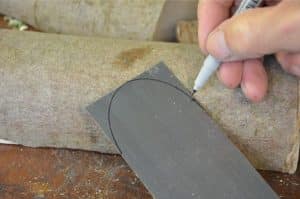
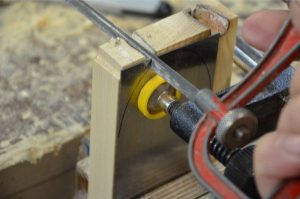
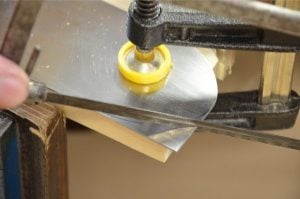
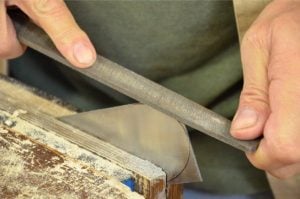
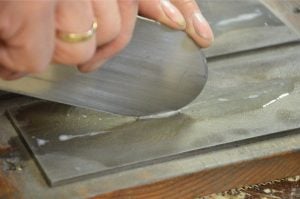
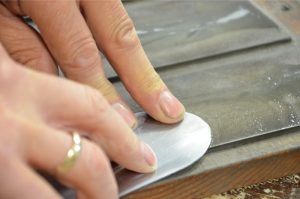
Important Note: It’s important to understand two misnomers associated with scrapers used in woodworking. Both the cabinet scraper and card scraper are indeed called scrapers. They do not scrape at all but slice and pare the surface with very unique and highly refined cutting edges and therefore using the term burr is erroneous too. That said, we won’t change the status quo now, but at least we should understand the difference between burr resulting from file work and sophisticated cutting edge.
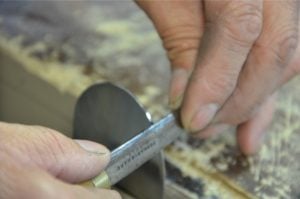
Once the consolidation is completed from both sides, the edge is burnished with the same burnisher.
Watch out for the new video we will be posting on sharpening the round or shaped scraper soon.


Paul Thank you for showing how you make a card scrapper and sharpening it for your spoon bowl carvings. I just finished watching your latest You Tube Video on carving spoons and am really intrigued, looks like a lot of fun . I know my Grandson will be wanting to learn how to make these spoons as well. I need to purchase a #7 sweep gouge next soon, is this the only gouge that is necessary or are there others that would be beneficial as well ?
Thank You so much for sharing !
Steve
Thanks for this, Steve. This is an ideal spoon gouge that can be used widely for other hollowing tasks including bowls of any size and things such as chair seats. Shallower gouges are useful, but it all depends on where you want to drive this aspect of woodworking.
Paul, I thoroughly enjoy your woodworking skills and my attempts to emulate them especially with the shooting board. You mentioned a router in the making of the shooting board but I couldn’t quite make out what it was called. Could you please elucidate. Many thanks for all your projects and the excellence of the teaching. Fred hawkins